1876 NORTH VERNON HISTORY
North Vernon Plain Dealer - February 23, 1876
North Vernon Plain Dealer - February 23, 1876
"CENTENNIAL EDITION"
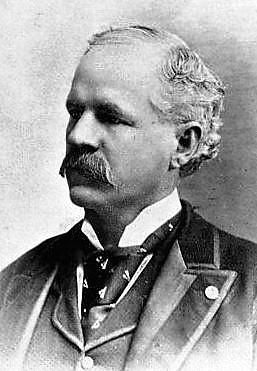
Leander H. Prather-Editor of the North Vernon Plain Dealer at the time this was written. Probably the author of this history.
In 1851, the prospects of the building of the Ohio & Mississippi railroad through the county, and its crossing the Madison & Indianapolis railroad, one and one half miles north of Vernon, and about half a mile from the Muscatatuck, attracted considerable attention to the prospective crossing of the two roads as a desirable and promising point for the location of a town.
In 1852, both the railroad and the place of crossing were established, and the increased interest and prominence given to the place, induced Messrs. Hagerman Tripp and Hiram Prather to purchase two hundred and fifty acres of land at and around the crossing-the part north of the O. & M. railroad line was purchased of Langston Johnson, and the part south of this line was purchased of Ezra S. Paybody.
The town was platted and put on record in Vernon in 1852 in the name of Hagerman Tripp, he being trustee for Tripp and Prather in the sale of lots. Col. Alanson Andrews owned a tract of land east of the part bought by Tripp and Prather and about the same time also platted and put on record an addition to the town.
The first sale of lots was by Col. A. Andrews in 1852. The next was by Tripp & Prather, in 1853.
The first house, a two-story frame, was built on the new town-site by Mr. W.D. Evans, in 1852, in Block F, southeast of the railroad crossing and southwest of the M. & I. railroad.
The second house was built by Hiram Prather in 1853, on the north side of Hoosier street, between Sixth and Seventh streets.
The first factory in the town was built in 1852 by Tripp, Hicks & Co., a few rods (a rod equals 16.5 feet) east of the railroad crossing. This was a saw-mill and furniture factory and employed about fifteen hands.
The first hotel was built by John Rust in 1853, on the north side of the O. & M. railroad, about thirty rods east of the crossing.
The first store-house, a two-story frame, was built by Joel Cassell, in 1854, on the north side of the O. & M. railroad, about ten rods north-east of the crossing.
Col. A. Andrews and John Clemmons built a saw-mill in 1852, on the north side of the O. & M. railroad, just east of block U.
The first school house was a one-story frame-home, built in 1854, on the north west of the State Road, about thirty rods south-east of the "Red Bridge," where this road crosses the O. & M. road; and the first school was taught in it by a Mr. Hamilton in 1855.
Caleb Whitmore was the first Justice of the Peace in the town.
Col. Hagerman Tripp's residence between the M. & I. railroad and the State Road, about one-forth mile south-east from the crossing, was built in 1854.
The first church in town was the Universalist church, built in 1860, on the west side of Walnut street, two squares south of the M. & I railroad.
The other churches in town were built in the following order: The Catholic church in 1861; M. E. church in 1863; Luthern church in 1866; Baptist church in 1870, and the Presbyterian church in 1871.
The present school building was completed in 1865
The first paper printed in town was the JENNINGS INDEPENDENT. It was established by Mr. Samuel McKeehan and E. H. Ranson in 1856. In 1858 it came into the hands of Lewis Whitcomb, who edited it a few years, and then enlisted in the army in the War of the Rebellion. The office and material were then bought by Col. A. Andrews. It remained in his hands a short time, when he sold it to Benj. Lewis, who took it to Vernon. In 1858, M. H. Andrews published a paper called the ANTI-BOLTER. It lived only a few months.
THE PLAIN DEALER was established by Allen S. Conner and James M. Mayfield, editors and proprietros, in 1865. The first number was published on the 24th day of March. In the spring of 1865, Richard A. Conner purchased the interest of Mr. Mayfield. In 1866, John C. Cope succeeded Mr. R. A. Conner, and in 1868, also purchased Mr. A. S. Conner's interest. In April, 1872, William G. Norris, who had manipulated the type from the starting of the paper, became co-proprietor with Mr. Cope. In the same year Mr. R. A. Conner again became connected with the paper, having purchased Mr. Cope's interest, and was succeeded in July, 1874, by Mr. Norris, who then became sole proprietor. In December 1875, Mr. Norris sold the office to Leander H. Prather and Peter Thienes, the present proprietors and publishers. At this time the office invoiced $3,300, including a Taylor cylinder press and a Gordon job-press.
.jpg)
THE SUN was established in 1872, by Samuel Holmes, at that time Mayor of Seymour, the first issue being on the 12th of September. It was then an eight-column paper with Cicago Ready-Print. On the 2d day of February 1873, J. N. Marsh, who had never before been in a news-paper office, purchased a half interest. Up to this time the paper had been conducted by Samuel W. Stairs, a young man from Kentucky. At the time Mr. Marsh took an interest in the paper, the subscription list numbered 385, two thirds of which were probably, bona-fide. On the 15th of November, 1873, the remaining half was purchased by Mr. Marsh, the entire cost being $1,350. Since then over $700 worth of new material have been added, including a new one-eighth Gordon jobpress. At the beginning of the year 1874, the home plan of publication was adopted. The paper was first started on the second floor of the Wilkerson block, and was moved to the new office, December the 1st, 1875. It now claims a circulation of 42 quires.
THE LITTLE JEWEL, a paper for boys and girls, published monthly, was established by W. S. Prather and Peter Thienes, jr. publishers. It had a short but brilliant career, having, in a few months, reached circulation of one thousand. In May, 1875, it was consolidated with the APPLE BLOSOM, a similar paper published in Seville, Medina county, O.
The first German paper, DIE POST, edited and published by Peter Thienes, jr., was established in May, 1875, and suspended in October of the same year.
The building of the O. & M. road through Jennings County was begun at is crossing of the M. & I. road and extended both east and west at the same time. The work in the county was finished in 1853. The first engine that ran on the road in this county was No. 4, which was shipped to this place by way of Madison, and was put together on the O. & M. road just west of the crossing, in 1853 by Mr. McNab, engineer, who ran it for some time in the construction of the road. The first trip this engine made, it had coupled behind it a four-wheeled truck, which the track layers had used in tunning T-railing from the crossing to the end of the track. This was thought to be an eventful day in the history of the road and of the town; and, in order to celebrate it properly, the engineer invited several of the citizens with their wives to take an excursion to the end of the track west about three miles. As it happened no ladies went, but a good many men and boys accepted the engineer's invitation, and crowded into the engine and on the improvised car. In coming back, about two miles from town, one of the wheels of the truck jumped off the track. Most of the men and boys on the truck jumped off and saved their lives; but two men were thrown on the track, and one of them was killed instantly and the other was mortally injured, having his back broken. He was brought to Mr. Remley's who lived in the brick-house southeast of town on the M. & I. road, where he died the next day. This accident cast quite a gloom over the town for some time.
The first Sunday-school in town was organized from the different churches, and called the "Union Sunday-school," and was superintended by Rev. M. A. Remley. It was held in the second story of Tripp, Hicks & Co's. furniture factory, where also relgious and other meetings were held. It was at a meeting of the citizens in this room that the town received its first christening. It had been called the "crossing" and was also known by the sobriquet of "Lickskillet", but neither of these suited the fancy of the aspiring citizens; so they were called to meet in the room mentioned for the purpose of selecting a suitable name for the town. The names of "Tripton" and "North Vernon" were proposed and discussed, and the name of Tripton was adopted. Afterward the town was called both Tripton and North Vernon. It was known in the Postal Department as Tripton for many years, but that name finally gave place to North Vernon, the name it now bears.
The first school in town was taught by Miss Ella Yeatman in a one story frame building where Bay's livery stable now is.
The post-office was established in 1853 and the first post-master was A. P. Huckleberry.
In 1854, work was begun on the Fort Wayne and Southern railroad south of town and continued until 1853, when its paper, called Buck-horn script, with which the workmen were paid, became valueless, and the work stopped. Efforts were made at different time to renew work on this road, until 1868, when that part between North Vernon and Jeffersonville came into the hands of the O. & M. Company, which immediately began work on it and finished it forthwith. The northern end of this line, from here to New Castle, is located and work began in its construction in 1873, but the financial crisis in the country that soon followed, put an end to the work. It is very probable that this part of the old original line will yet be built, as it is much needed.
In July, 1867, North Vernon was incorporated as a town, and the following officers were elected: A. S. Conner, Trustee of First District; James M. Mayfield, Trustee of Second District; Charles Brenner, Trustee of Third District; Alanson Andrews, Trustee of Fourth District; E. G. Bondurant, Treasurer, and F. W. Verbarg, Marshal, Clerk, and Assessor. James M. Mayfield was chosen President of the Board of Trustees.
During the was of the rebellion North Vernon furnished many brave officers and soldiers for the army of the Union, none of whom should be mentioned in preference to the others, and the list is too large for publication in so limited a space. Many of those surviving are yet among us, and the names of those whose lives were laid upon the alter of their country are embalmed in sacred memory.
When the town was located, most of the ground which it now occupies was heavily timbered with the usual forest growths, and a tangled mass of under-growths and vines. These soon began to rapidly disappear, and in their place sprang up nice new white-painted frame houses. It would be impossible and almost useless to trace the growth of the town in minute detail.
The number of inhabitants at the present time is about twenty-five hundred. The business directory of the town, published in the county Directory in this number, gives a better idea of the town now than any description we can give it. Not a few men and women who live in this place, and some who have moved away, can review the history of our town and vicinity with pleasant, and some with tender recollections. They will not have to travel back very far into the past until they are boys and girls again, going to school together, visiting the bridge, strolling along the banks of the fascinating picturesque Muscatatuck, or lingering sentimentally in the shades and crannies of Lover's Rock. Whether or not the realities of life are equal to those halcyon-days imaginations, quickened and warmed by ambition and love, we leave those interested to judge for themselves.
Notes by Sheila Kell
Some interesting facts concerning this article. We frequently think people in charge of things like local newspapers were older, in the case of this edition of the North Vernon
Plain Dealer the Editor - Leander H. Prather was only 33 years old. The Publisher - Peter Thienes, Jr. was only 19. By 1880 both men had moved out of Jennings County. Here are some items concerning each of them.
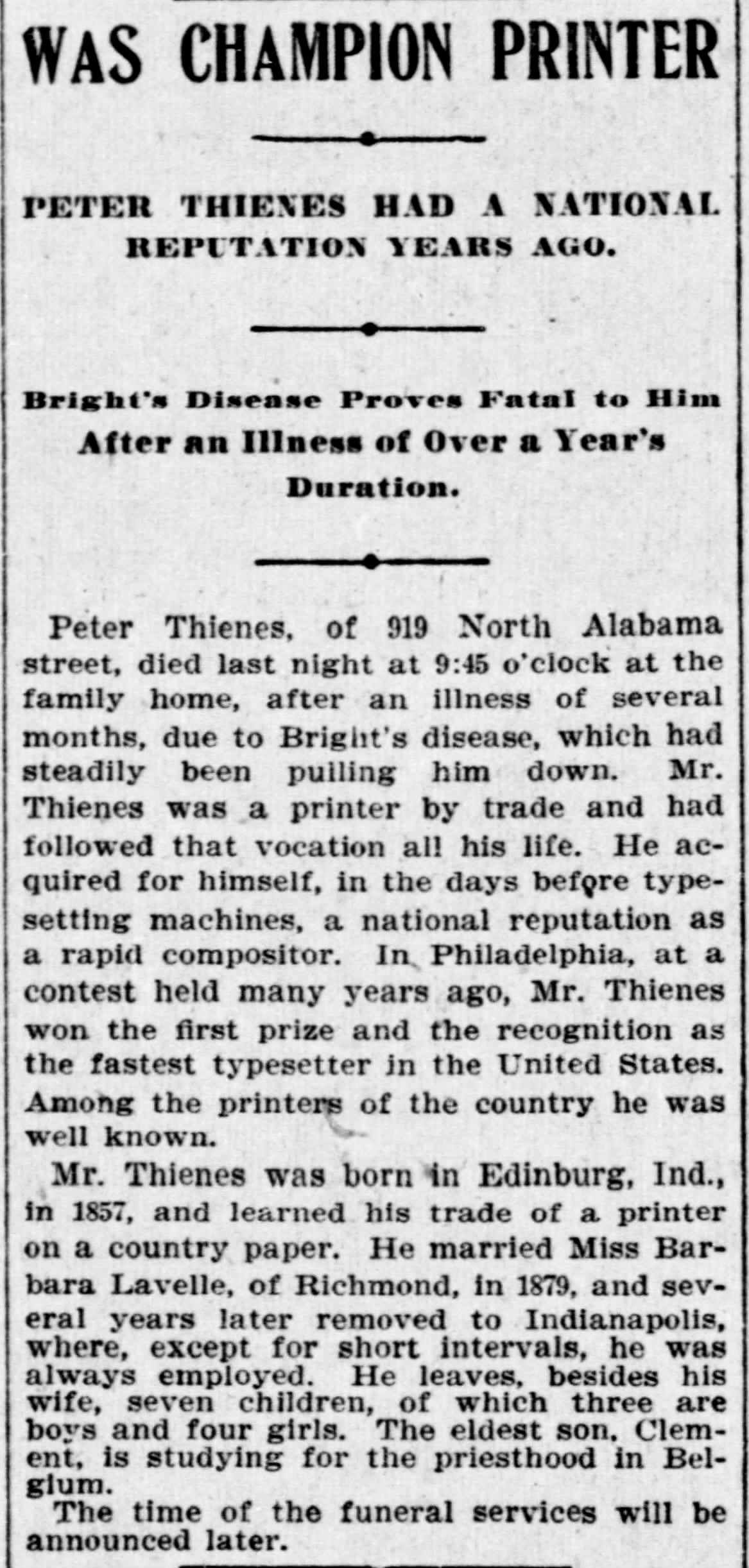
The Indianapolis Journal - September 23, 1903
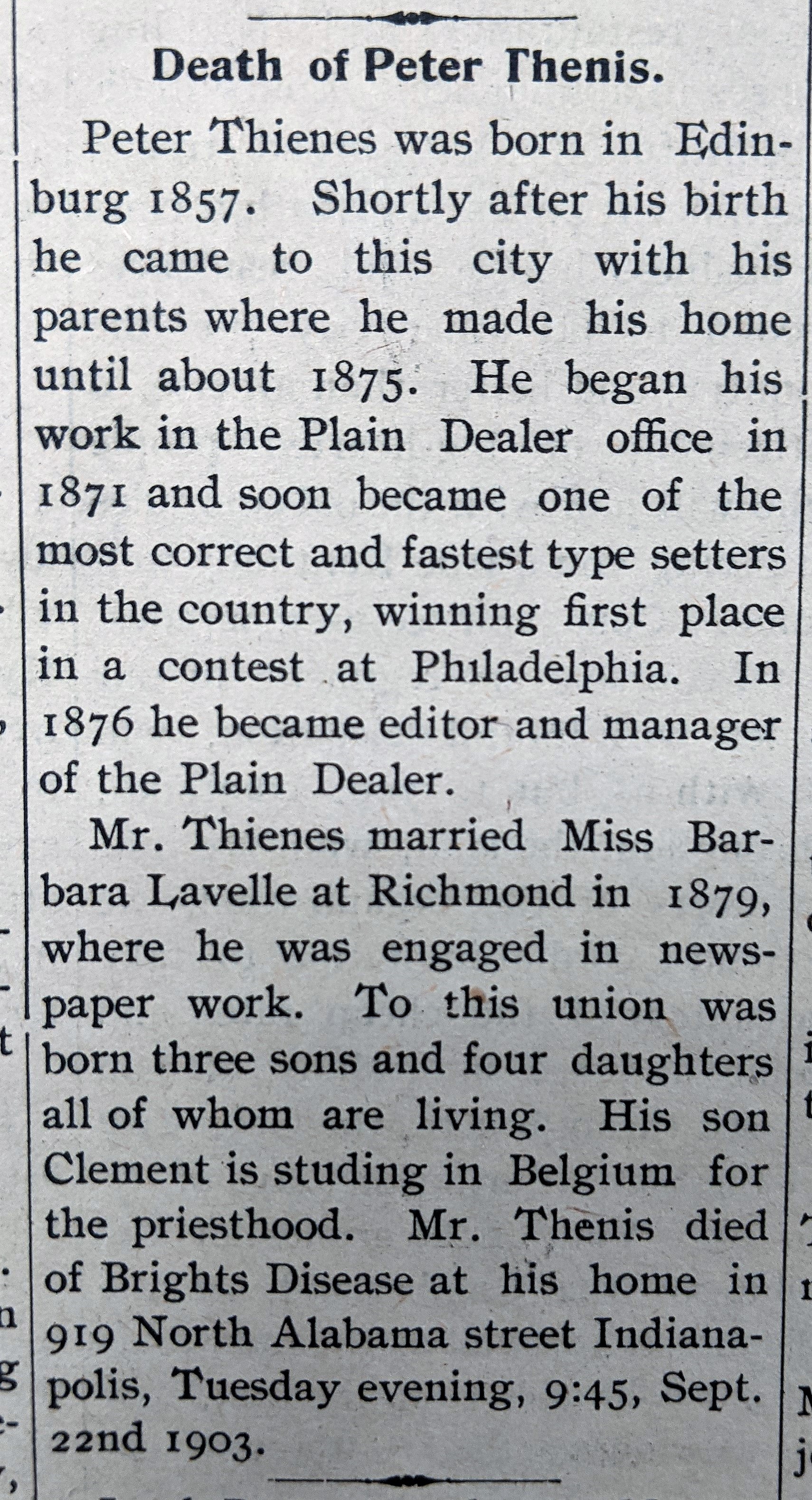
The North Vernon Sun - September 25, 1903

Spokane, Washington - The Spokesman Review, Newspaper - September 13, 1921, Page 7
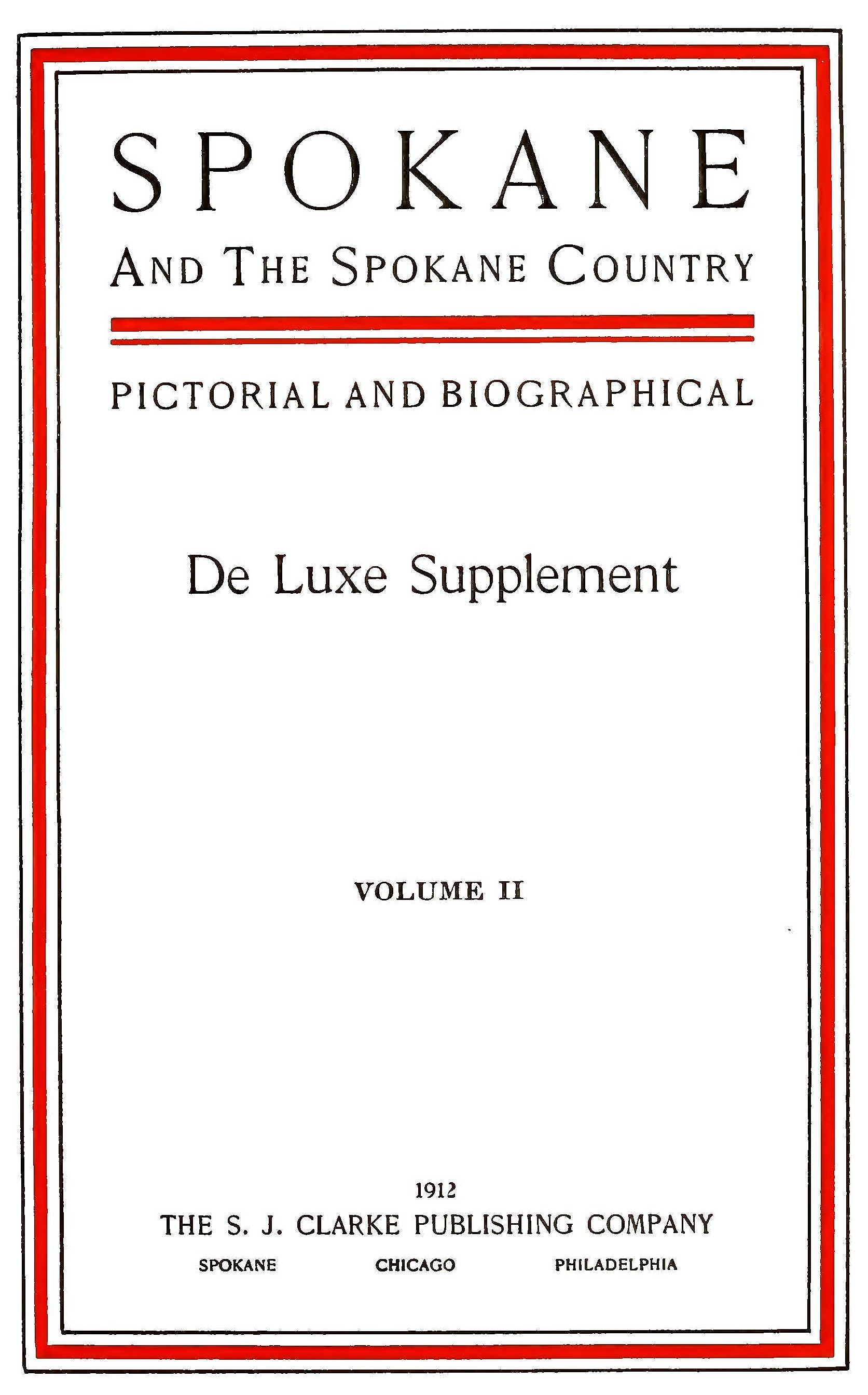
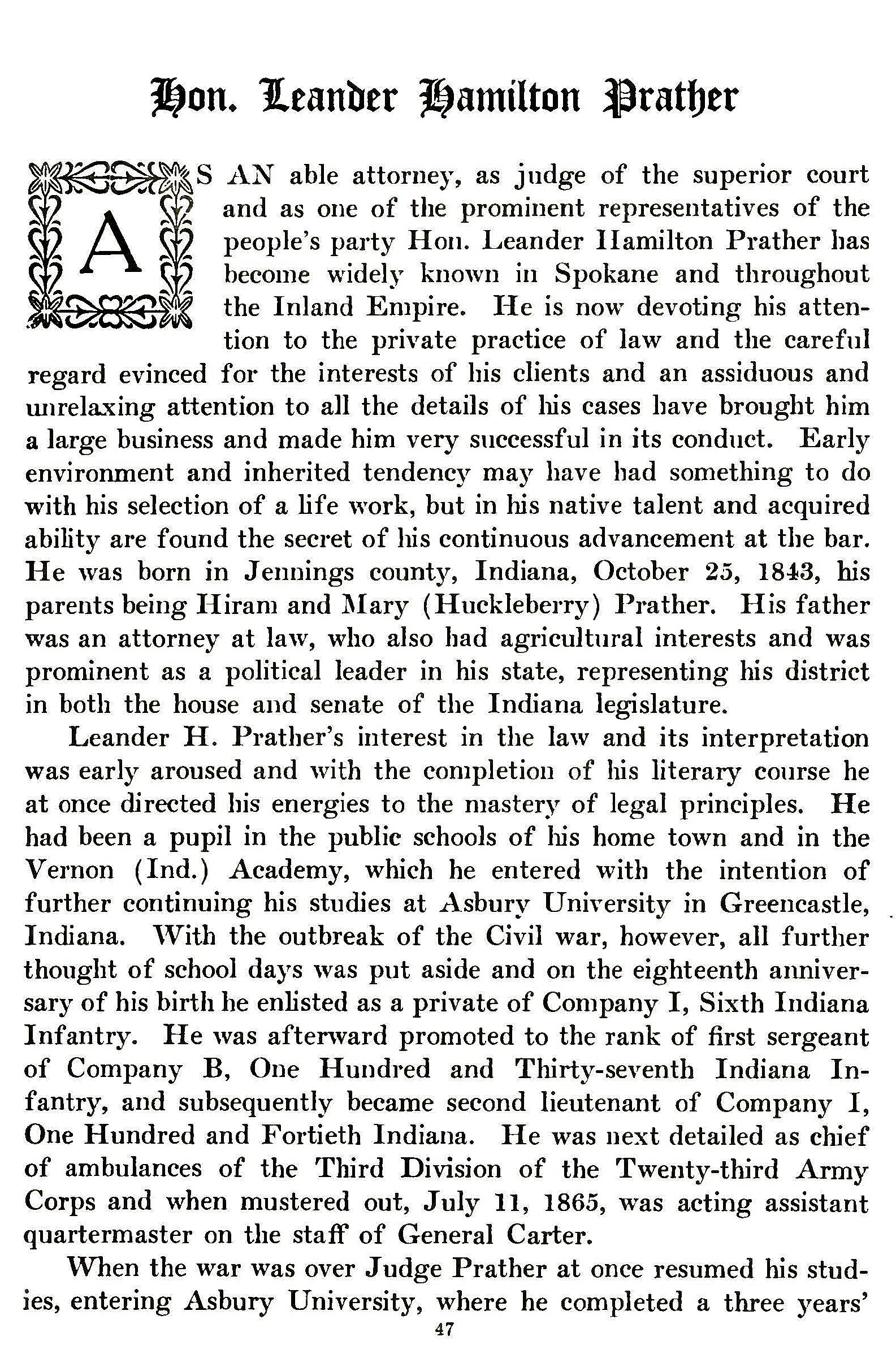
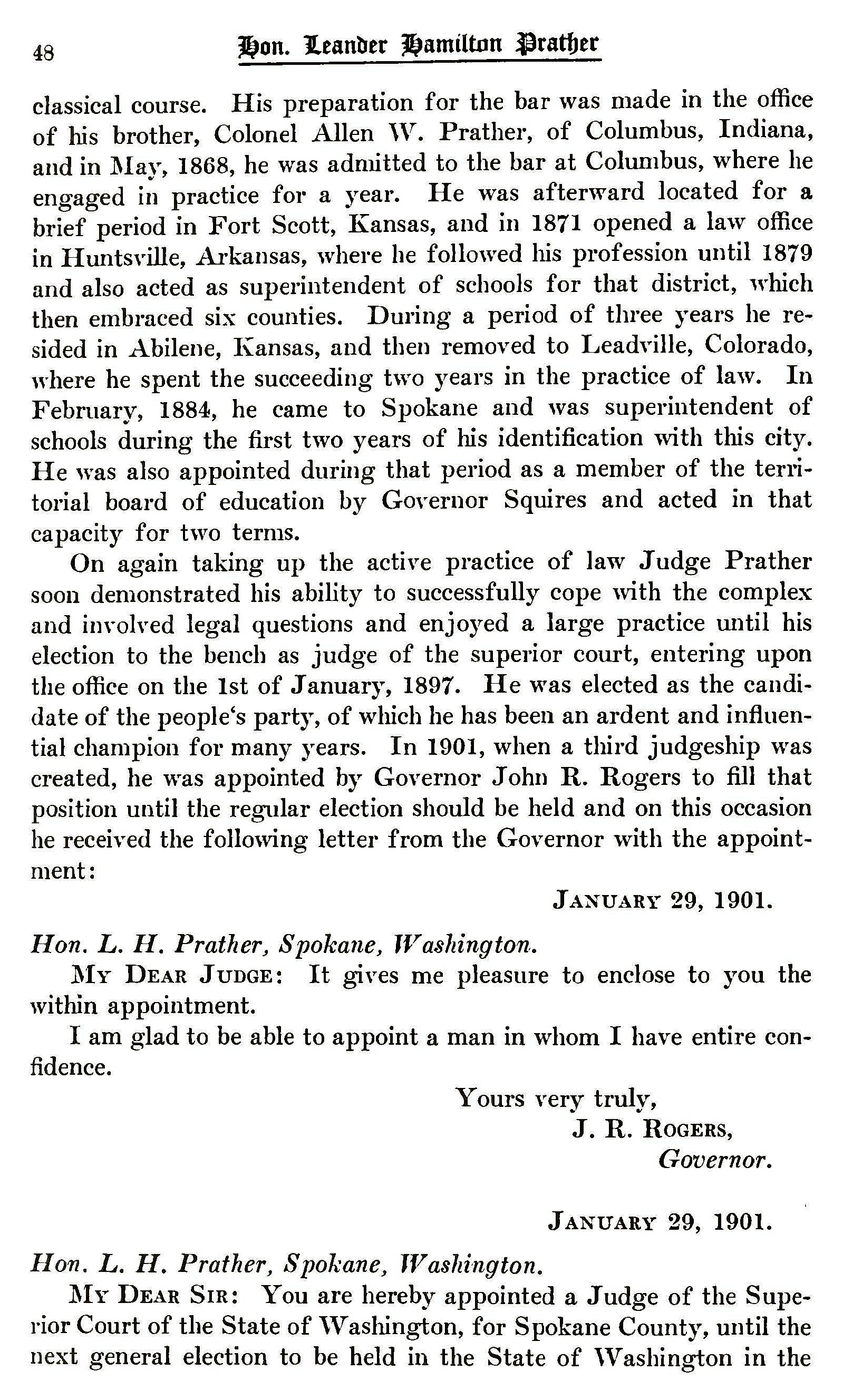
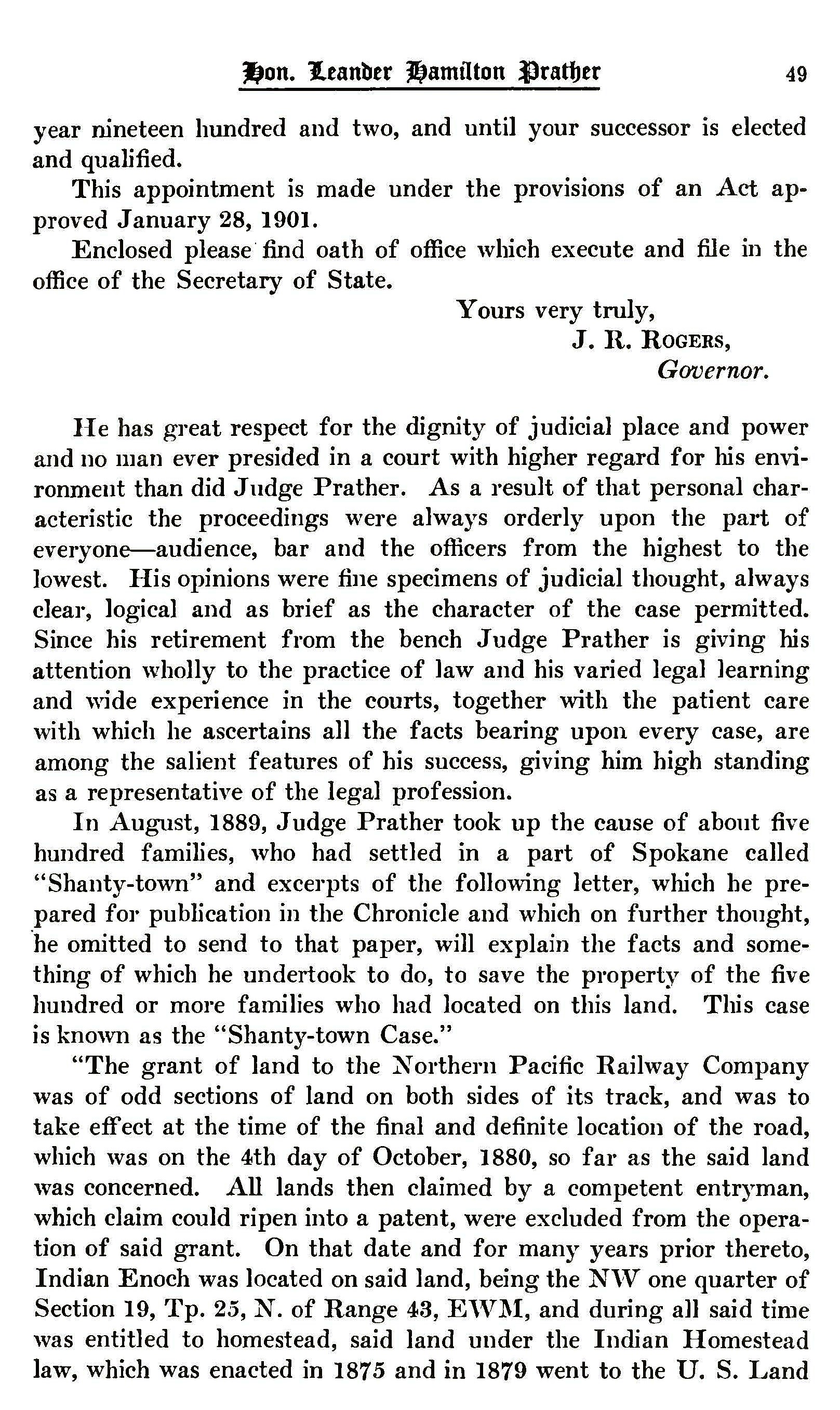
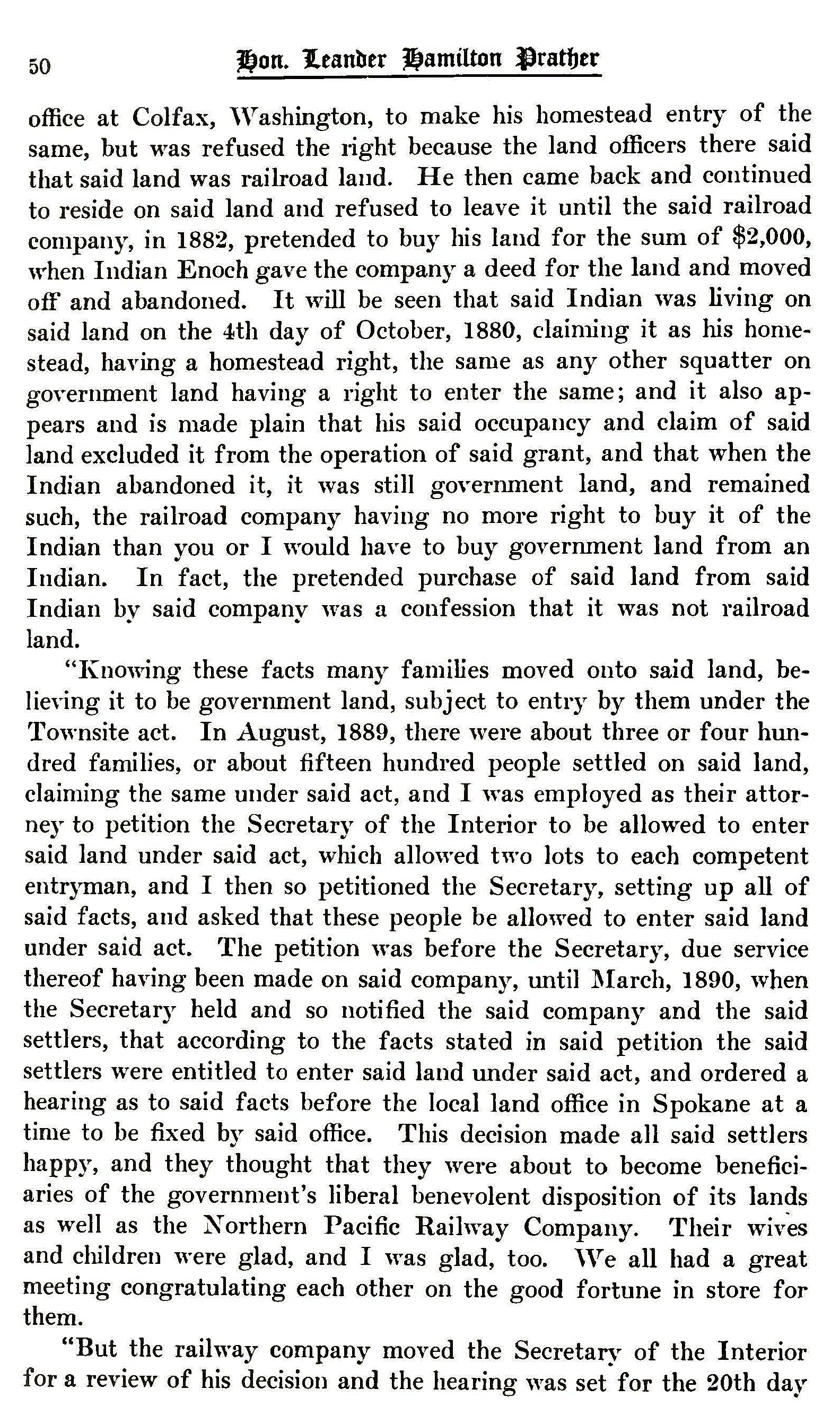
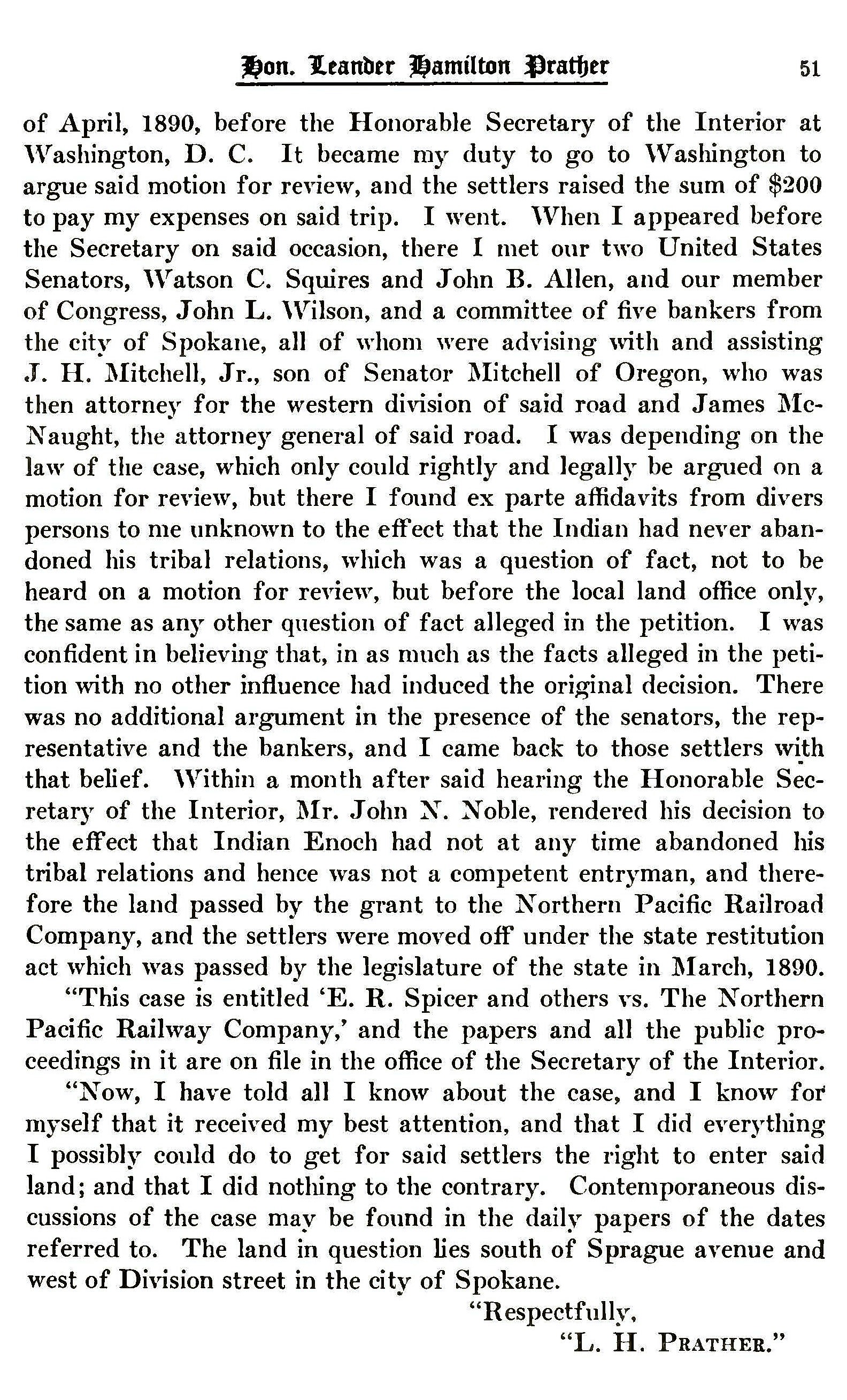
You may use this material for your own personal research, however it may not be used for commercial publications without express written consent of the contributor, INGenWeb, and